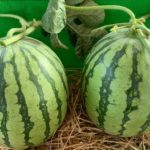As Tet approaches, Vietnamese families start cleaning their houses, hanging decorations, and buying kumquat or peach blossom trees. However, the most important tradition is hanging Cau Doi, or Spring Couplets, which are believed to bring good luck and prosperity for the new year.
1 What are Tet Couplets?
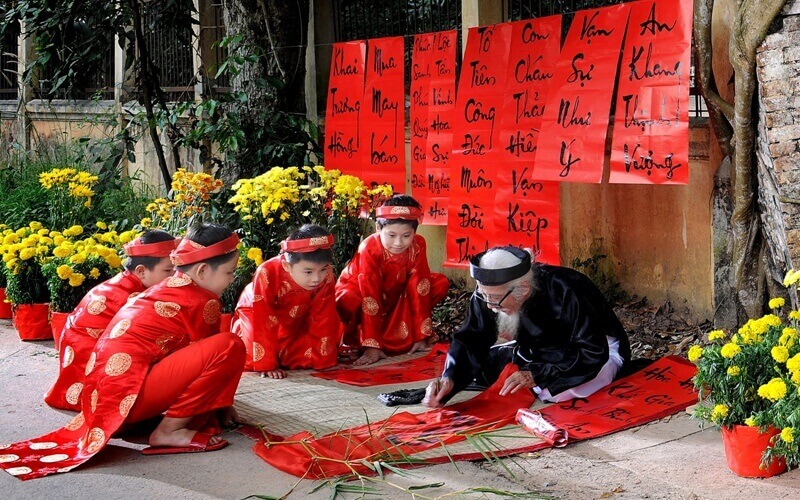 What are Tet Couplets?
What are Tet Couplets?
Tet Couplets, also known as Spring Couplets or Xuan lien, are a form of literary art that consists of two corresponding clauses expressing the author’s intentions, perspectives, and emotions during the Tet holiday.
These couplets are an indispensable part of the Lunar New Year celebrations in Vietnam and other Asian countries. They are typically written on pink or red paper using ink or gold powder, and some are even written on red paper with gold leaf. The content conveys best wishes for a happy, prosperous, and fortunate new year.
See also: Best Tet Greetings to Send to Your Loved Ones
2 Origin of Tet Couplets
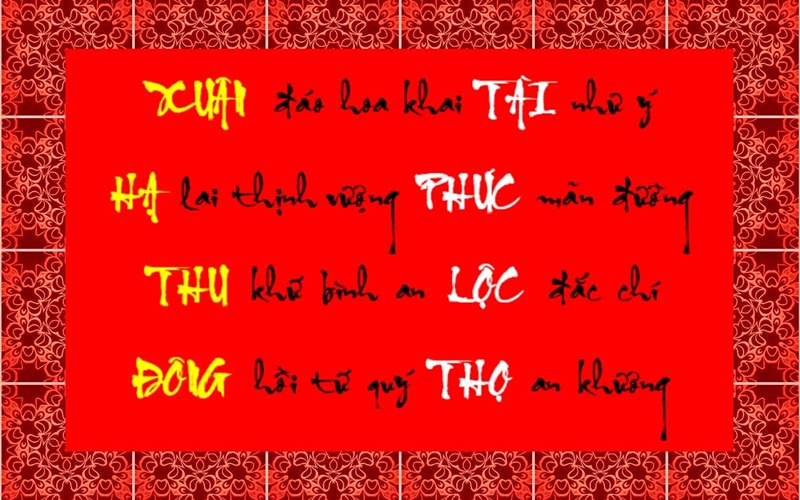 Origin of Tet Couplets
Origin of Tet Couplets
The tradition of Tet Couplets originated in China during the Zhou Dynasty: “On the first day of the new year, each household would hang two wooden charms made from peach wood, called “dao fu”, on their doors. These charms were believed to ward off evil spirits and bring good luck, and they had the names of two gods, Shen Tu and Yu Lei, written on them.”
During the Five Dynasties period, in the Western Han Dynasty palace, the content written on these peach wood charms evolved into couplets. Specifically, according to the “Song Shi – Shu Shi Jia”, Emperor Meng Chang of the Later Shu Dynasty ordered the scholar Zhang Zun to write the following couplet:
“Xin nian nao yu jing – Jia jie hao chang chun” (May the new year be filled with blessings – May your home always be filled with spring)
This was the first Tet couplet in the history of Asian countries. From the Song Dynasty onwards, writing Tet couplets became a popular custom.
During the Ming Dynasty, the name dao fu was officially changed to Spring Couplets or Chun Lian. This custom spread widely to other Asian countries such as Japan, Korea, and Vietnam.
In Vietnam, the tradition of Tet couplets became popular during the Tran Dynasty, and it not only carried the meaning of good luck but also showcased the intelligence of the writer.
3 Significance of Hanging Tet Couplets
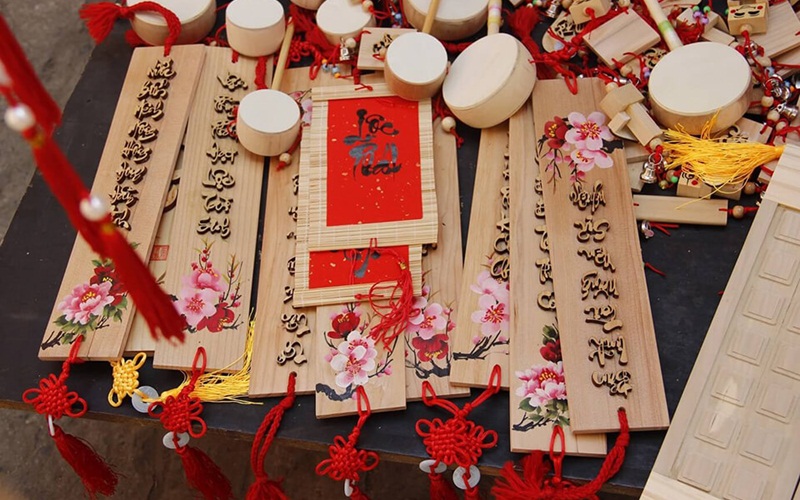 Significance of Hanging Tet Couplets
Significance of Hanging Tet Couplets
Tet couplets are usually written on pink or red paper, as these colors are believed to bring joy and vibrancy, according to traditional Vietnamese beliefs. Each word and sentence is carefully chosen to convey wishes for a fortunate and happy year.
Hanging Tet couplets also directs people towards the “truth-goodness-beauty” ideal. This tradition has long been a part of Vietnamese cultural beliefs. The red couplets, written in the Latin alphabet, showcase the writer’s intellect and artistic skills.
Tet couplets often express respect and sincerity towards elders and bestow wishes of prosperity and success upon loved ones during the holiday season.
4 Modern Trends in Writing Tet Couplets
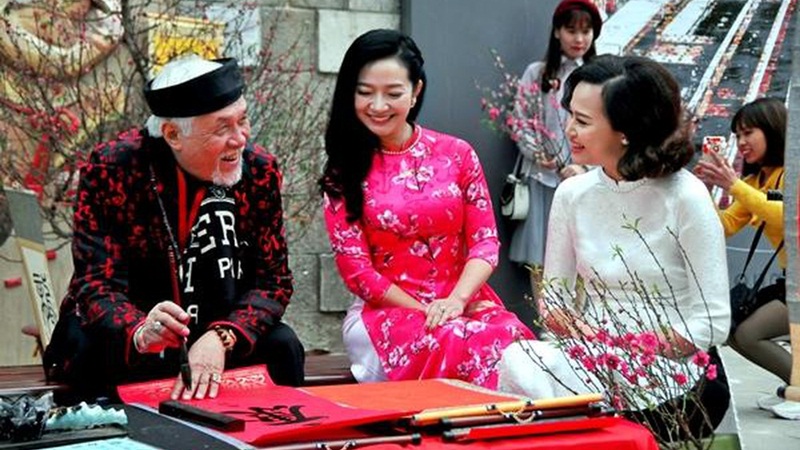 Modern Trends in Writing Tet Couplets
Modern Trends in Writing Tet Couplets
Here are some modern trends in writing Tet couplets:
- Using Chinese or Nom Characters: Some families choose to buy couplets written in Chinese or Nom characters, even if they don’t fully understand their meanings. They believe that all Tet couplets convey general wishes for a lucky and prosperous new year.
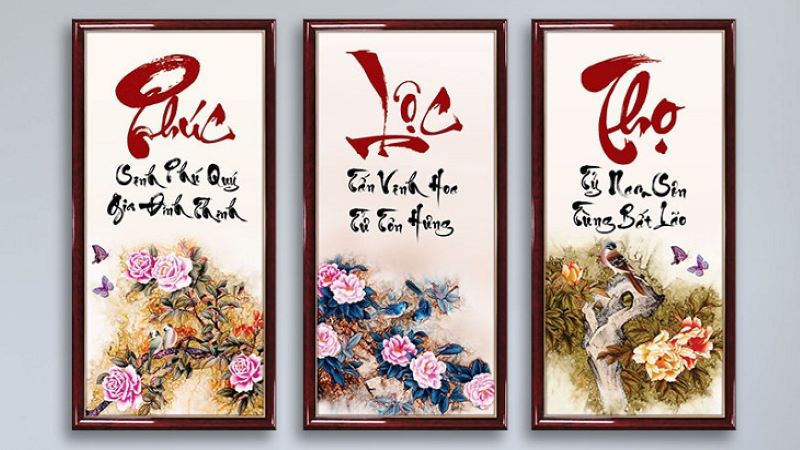
- Vietnamese Calligraphy: Besides Chinese and Nom characters, Tet couplets written in Vietnamese calligraphy are also popular. This is because Vietnamese calligraphy is easier to understand and has a high artistic value, with elegant and beautiful lettering.
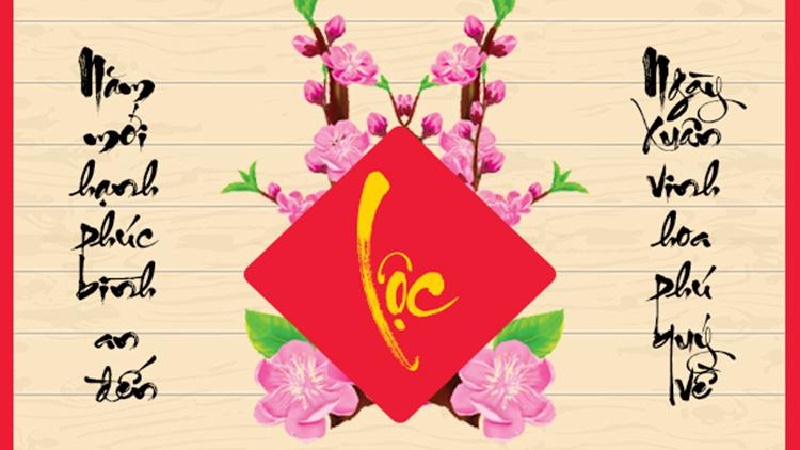
- Emphasizing Meaning Over Length: Instead of focusing on the length of the couplet, people now prioritize the meaning and sentiment conveyed in wishing for a lucky, peaceful, and prosperous year.
In addition to couplets, traditional Tet celebrations include banh chung (square sticky rice cakes), banh tet (cylindrical sticky rice cakes), various types of dried candied fruits, and the essential mam ngu qua (five-fruit tray), all of which symbolize wishes for a plentiful and fortunate new year. Join us in preparing a beautiful five-fruit tray to welcome a meaningful new year!
See also: Traditional Vietnamese Foods for Tet Holiday




























